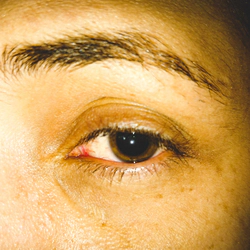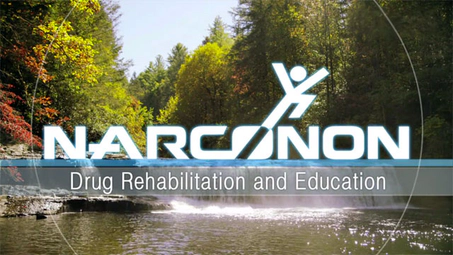DRUGS: WHAT YOU
NEED TO KNOW Booklet

Signs and Symptoms of Hallucinogen Addiction

Hallucinogens have a dramatic effect on the user. These effects may last minutes, as with Salvia divinorum, or they could last indefinitely, as has happened to some people who used LSD. Despite the unpredictable and dangerous effects of these drugs, more than seven million people use these drugs each year. There are more than 1.4 million new users each year.1
Sometimes one of these drugs falls out of favor as the word gets around about how dangerous it is. While this phenomenon may make that drug drop out of sight for a while, as happened with PCP, eventually it seems to come back into popularity some years later.
There’s a long list of drugs that possess hallucinogenic properties.
-
LSD: A synthetic chemical derived from the fungus on rye plants.
-
Psilocybin: A component found in specific mushrooms that are native to tropical and subtropical regions.
-
Mescaline: Psychoactive component found in peyote, a small cactus that grows in Mexico and Texas.
-
DMT, short for dimethyltryptamine: This chemical is found in a wide variety of plants.
-
Ayahuasca: A formula concocted from a combination of Amazonian plants, including those used to make DMT.
-
PCP/Phencyclidine: It was once used as an anesthetic but had severe side effects. Those coming out of the anesthetic often became delusional and agitated.2
-
Ketamine: This drug is used as an anesthetic in limited circumstances and is frequently used in veterinary medicine.
-
DXM/dextromethorphan: An ingredient in many cough medications.
-
Salvia divinorum: This plant that grows in Mexico, Central and South America can be smoked for its hallucinogenic properties.
There are also hundreds of other synthetic drugs on the market, some of which possess hallucinogenic properties. Included in this group are synthetic cathinones, sometimes referred to as bath salts, like mephedrone, MDPV and methylone.3
Physical Signs of Hallucinogen Addiction
Because of the long list of drugs in this category, the symptoms that can be exhibited are varied. Here are some of the physical symptoms common to this type of drug.

- Dilated pupils
- Dry mouth
- High blood pressure
- Increased heart rate
- Nausea
- Diarrhea
- Vomiting
- Uncoordinated movements
- Sweating
- Numbness
- Tiredness
- Sleep problems
- Flushing
- Loss of appetite
- Tremors
- Rapid eye movements
- Anesthesia
Paradoxically, PCP at higher doses can cause breathing and heart rate to slow down.4
Behavioral and Mental Signs of Hallucinogen Addiction
The behavioral and mental signs of hallucinogen addiction can be profound and long-lasting. In fact, in some cases, these signs can even return years after a person stopped using the drug.
There’s no way to predict the effect hallucinogens will have on a person. The drug user could have a relatively trauma-free experience or they could experience a psychotic episode complete with violent actions.



Here are some of the mental signs of addiction to various hallucinogens.
-
LSD: Rapidly changing emotions, delusions, terror, panic, visual hallucinations, fear one is going insane.
-
Psilocybin: Altered perception of time, inability to tell reality from hallucination, panic, psychosis.
-
Mescaline: Illusions, altered perception of time, anxiety.5
-
DMT: Agitation, terror.
-
Ayahuasca: Altered state of awareness, visions, agitation.
-
PCP: Dissociation, hallucinations, delusions, paranoia, feeling of invulnerability, symptoms similar to schizophrenia, violence, suicidal intentions or attempts.
-
Ketamine: Amnesia, hallucinations, bad dreams, memory problems, dissociation that persists after the drug wears off.
-
Dextromethorphan: Psychosis, paranoia, sense of being outside the body, loss of contact with reality, altered perceptions.
-
Salvia divinorum: Uncontrollable laughter, talkativeness, fear, panic, losing contact with reality, memory loss, euphoria.
-
Methoxetamine: Loss of identity and perception of one’s body, euphoria, terror, confusion, aggression, heavily altered consciousness of the environment.
The Long-Term Physical Damage of Hallucinogen Addiction
While the most usual damage of hallucinogens occurs in the mind of the user, there are some physical types of damage that can occur from extended use.
- Persistent speech problems
- Seizures
- Convulsions
- Alterations to reflexes
- Damage to kidneys, liver and bladder
- Stomach and abdominal pain
- Heart and lung failure
- Insomnia
- Tolerance, requiring higher dosages to get the same effect being sought
As tolerance develops, it is very easy to slip from abuse into a physical addiction.
Death is not a frequent effect of hallucinogens, but neither is it uncommon for a person to become suicidal, homicidal or violent or for them to become badly injured while they are dissociated or disoriented. Thus hallucinogens can indirectly cause death.
The Long-Term Emotional and Mental Damage of Hallucinogen Addiction

The unpredictable effects of these drugs can be catastrophic for some people. Drugs such as LSD, PCP, mescaline and psilocybin can cause flashbacks. These flashbacks can consist of unexpected and uncontrollable hallucinations and changes in perceptions that recur days, months or more than a year later. In a few people, these flashbacks can be so severe that they are disabling.
The uncontrollable hallucinations caused by these drugs plus psychotic episodes that can occur could create such trauma that some people could struggle with the aftereffects. Some individuals also suffer breaks from reality or an inability to connect with their own identity and that could be difficult for some people to deal with. The violent behavior associated with some drugs can result in injury or arrest, which can also have emotional repercussions for the user.
In addition, it is common to suffer problems such as memory loss, depression, suicidal thoughts and anxiety long after chronic use ceases.
There’s no way for a person to know how they will react to hallucinogen intoxication. A person using these powerful drugs is simply taking their life into their hands.
Hallucinogen Overdoses
Here are some of the effects of doses that are too large.
-
LSD: Collapse, vomiting, respiratory arrest, coma, death
-
Psilocybin: Psychosis, death
-
PCP: Slowed heart rate and breathing, lowered blood pressure, kidney failure, seizures, heart arrhythmias, muscle rigidity, death
-
Ketamine: Hospitalization due to schizophrenic symptoms, convulsions, death
-
Dextromethorphan: Lethargy, high blood pressure, over-excitability. Death can occur especially if the drug is mixed with other substances
-
Salvia divinorum: The effects of salvia are very short-lived, perhaps only ten minutes or so. It is not certain whether or not overdoses of salvia occur
Withdrawal from Hallucinogens
As noted, psychological dependence is more common than physical dependence. But tolerances do occur (the need for higher doses of drugs) and some of these drugs are associated with withdrawal symptoms.
Withdrawal symptoms can include agitation, hallucinations, weight loss, twitching muscles, seizures, cravings, nausea, low blood pressure, upset stomach, insomnia and anxiety.
Recovering from Hallucinogen Addiction
A person who becomes psychologically dependent on these drugs will have to learn to enjoy life without hallucinogenic alterations. The physical and mental harm as well as the trauma that is so often experienced can make it difficult for a person to resume a sober, productive life again. Of course, flashbacks can further complicate recovery.
The family and friends of a person who is recovering from hallucinogen addiction may need to provide calm support for an extended period of time while their loved one regains control of their life.
Sources:
-
SAMHSA. “Key Substance Use and Mental Health Indicators in the United States: Results from the 2020 National Survey on Drug Use and Health.” Substance Abuse and Mental Health, 2021. SAMHSA Publication ↩︎
-
Department of Justice. “Hallucinogens and Dissociative Drugs: Including LSD, PCP, Ketamine, and Dextromethorphan.” DOJ, 2001. DOJ Article ↩︎
-
DEA. “About Synthetic Drugs.” DEA. DEA Article ↩︎
-
National Institute on Drug Abuse. “Hallucinogens - LSD, Peyote, Psilocybin, and PCP.” NIDA, 2014. NIDA Publication ↩︎
-
DEA. “Peyote & Mescaline.” DEA, 2020. DEA Publication ↩︎


 ®
®
